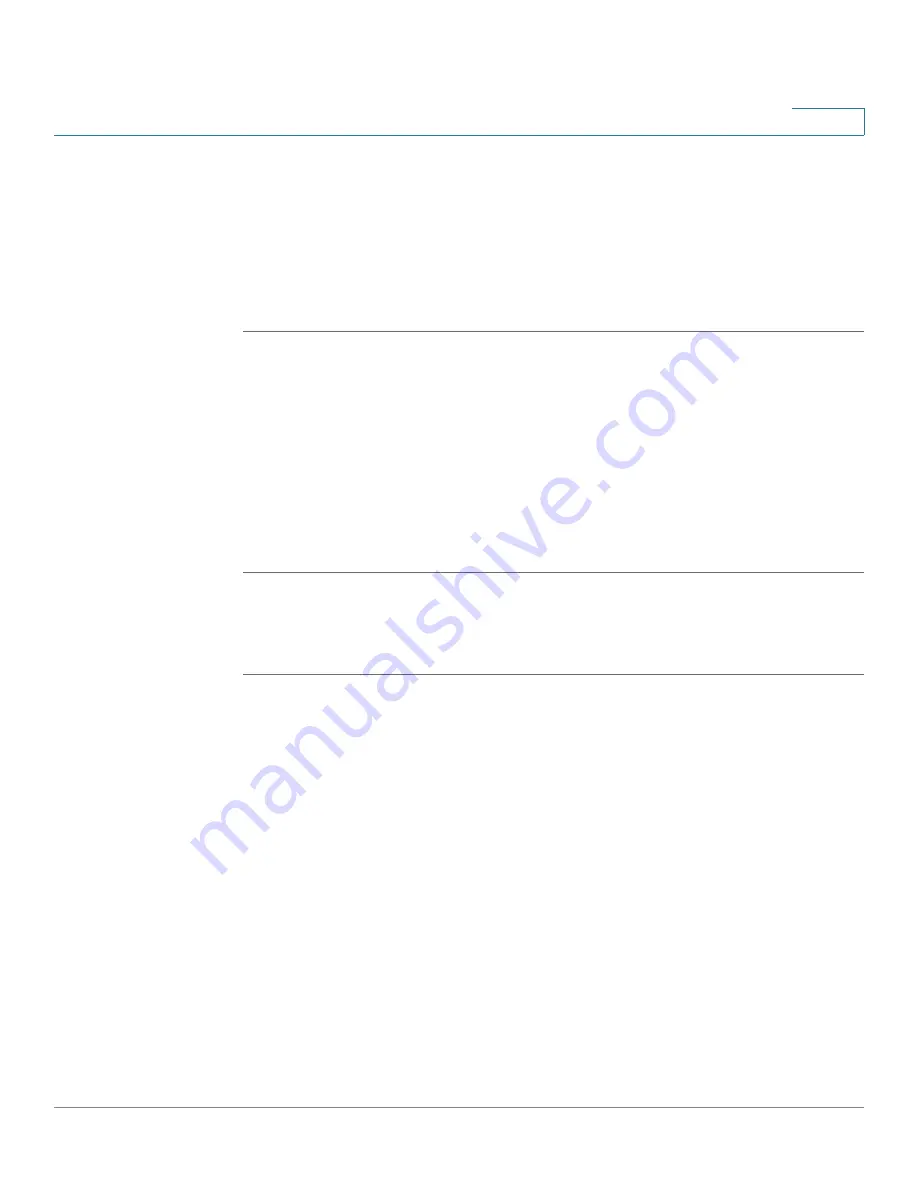
Security Services
Configuring Web URL Filtering
Cisco ISA500 Series Integrated Security Appliances Administration Guide
282
7
Mapping Web URL Filtering Policy Profiles to Zones
Use the Policy to Zone Mapping page to apply the Web URL Filtering policy profile
to each zone. The Web URL Filtering policy assigned to each zone determines
whether to block or forward the HTTP requests from the hosts in the zone. By
default, Default Profile that permits all URL categories is assigned to all predefined
zones and new zones.
STEP 1
Click
Security Services > Web URL Filtering > Policy to Zone Mapping
.
The Policy to Zone Mapping window opens.
STEP 2
Click
On
to enable Web URL Filtering, or click
Off
to disable it.
NOTE:
Enabling Web URL Filtering will disable Firewall Content Filtering and
vice-versa.
STEP 3
In the
Zone Policy Map
area, choose a Web URL Filtering policy for each zone.
STEP 4
Click
Save
to apply your settings.
Configuring Advanced Web URL Filtering Settings
STEP 1
Click
Security Services > Web URL Filtering > Advanced Settings
.
STEP 2
Enter the following information:
•
Filter Traffic on HTTP port:
Enter the port number that is used for filtering
HTTP traffic. Web URL Filtering only monitors and controls the website visits
through this HTTP port. The default value is 80.
•
Filter Traffic on HTTPS port:
Enter the port number that is used for filtering
HTTPS traffic. Web URL Filtering only monitors and controls the website
visits through this HTTPS port. The default value is 443.
•
Blocked Web Components:
You can block or permit the web components
like Proxy, Java, ActiveX, and Cookies. By default, all of them are permitted.
-
Proxy:
Check this box to block proxy servers, which can be used to
circumvent certain firewall rules and thus present a potential security
gap.
-
Java:
Check this box to block Java applets that can be downloaded from
pages that contain them.















































